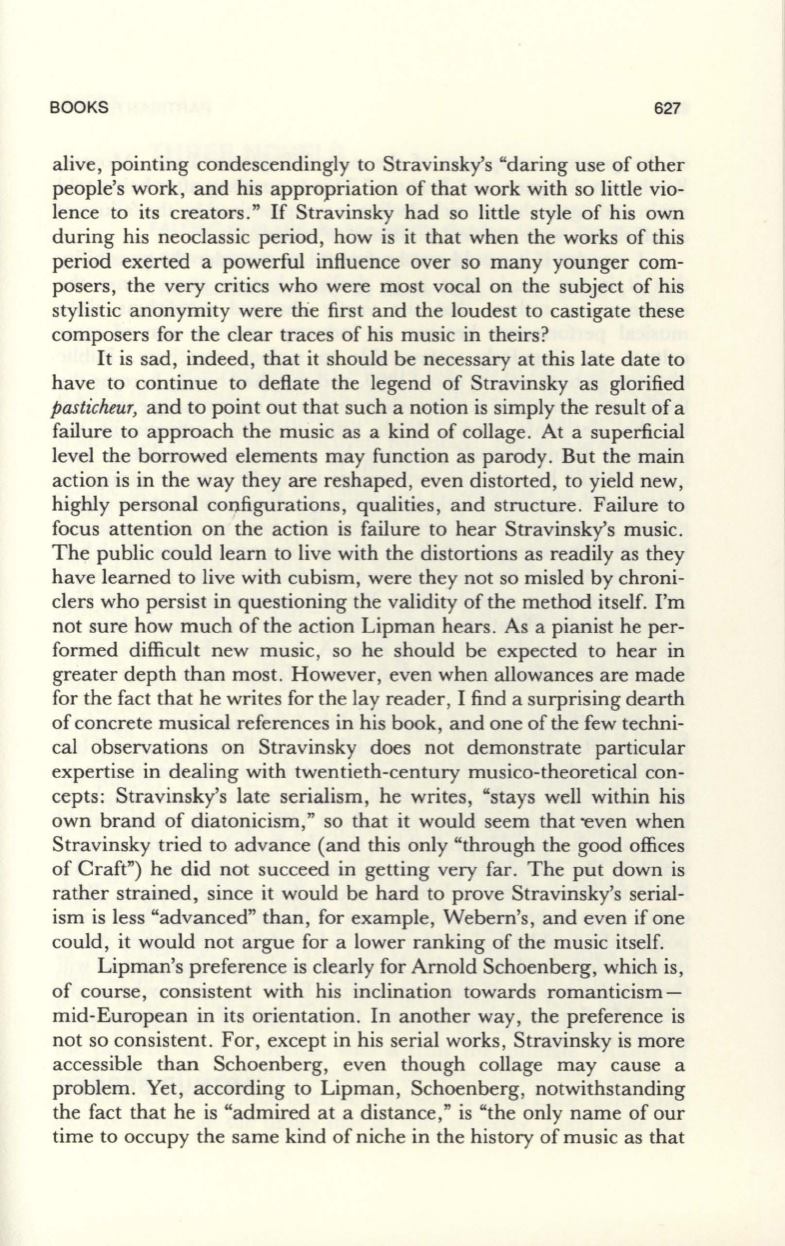
BOOKS
627
alive, pointing condescendingly to Stravinsky's "daring use of other
people's work, and his appropriation of that work with so little vio–
lence to its creators."
If
Stravinsky had so little style of his own
during his neoclassic period, how is it that when the works of this
period exerted a powerful influence over so many younger com–
posers, the very critics who were most vocal on the subject of his
stylistic anonymity were the first and the loudest to castigate these
composers for the clear traces of his music in theirs?
It is sad, indeed, that it should be necessary at this late date to
have to continue to deflate the legend of Stravinsky as glorified
pasticheur,
and to point out that such a notion is simply the result of a
failure to approach the music as a kind of collage. At a superficial
level the borrowed elements may function as parody. But the main
action is in the way they are reshaped, even distorted, to yield new,
highly personal configurations, qualities, and structure. Failure to
focus attention on 'the action is failure to hear Stravinsky's music.
The public could learn to live with the distortions as readily as they
have learned to live with cubism, were they not so misled by chroni–
clers who persist in questioning the validity of the method itself. I'm
not sure how much of the action Lipman hears. As a pianist he per–
formed difficult new music, so he should be expected to hear in
greater depth than most. However, even when allowances are made
for the fact that he writes for the lay reader, I find a surprising dearth
of concrete musical references in his book, and one of the few techni–
cal observations on Stravinsky does not demonstrate particular
expertise in dealing with twentieth-century musico-theoretical con–
cepts: Stravinsky's late serialism, he writes, "stays well within his
own brand of diatonicism," so that it would seem that -even when
Stravinsky tried to advance (and this only "through the good offices
of Craft") he did not succeed in getting very far. The put down is
rather strained, since it would be hard to prove Stravinsky's serial–
ism is less "advanced" than, for example, Webern's, and even if one
could, it would not argue for a lower ranking of the music itself.
Lipman's preference is clearly for Arnold Schoenberg, which is,
of course, consistent with his inclination towards romanticism–
mid-European in its orientation. In another way, the preference is
not so consistent. For, except in his serial works, Stravinsky is more
accessible than Schoenberg, even though collage may cause a
problem. Yet, according to Lipman, Schoenberg, notwithstanding
the fact that he is "admired at a distance," is "the only name of our
time to occupy the same kind of niche in the history of music as that


